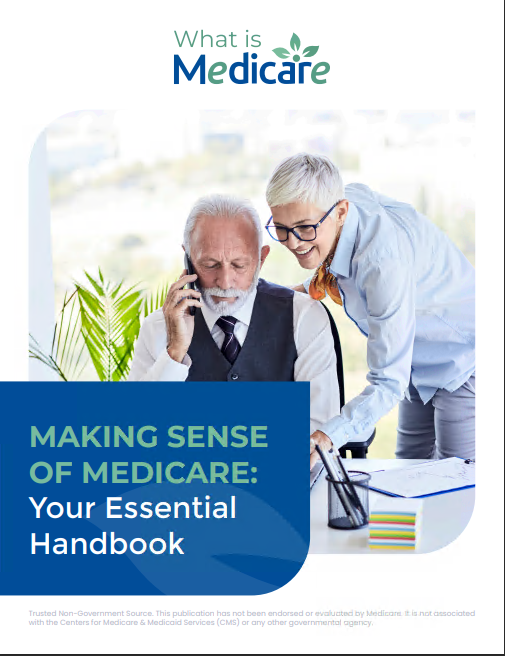Key Takeaways
- Medicare Part D provides essential prescription drug coverage, often overlooked by beneficiaries who primarily focus on hospital and medical insurance.
- Understanding the value and coverage of Medicare Part D can help you manage medication costs and avoid penalties.
Medicare Part D: The Prescription Coverage You Didn’t Know You Were Missing
When it comes to Medicare, most people think about coverage for hospital stays and doctor visits, but there’s another critical component that often gets overlooked—prescription drug coverage. Medicare Part D is designed to help beneficiaries afford the cost of their medications, which can be a significant portion of healthcare expenses, especially as we age. Yet, many aren’t fully aware of what Part D offers, why it’s essential, or how it can save them money in the long run.
What Exactly is Medicare Part D?
Medicare Part D is the part of Medicare that provides prescription drug coverage. It is an optional plan that can be added to your original Medicare (Parts A and B), and is also available through Medicare Advantage (Part C) plans that include drug coverage. Private insurance companies offer these plans, but they must meet specific guidelines set by Medicare.
Each Part D plan has its own list of covered drugs, known as a formulary, which is divided into different tiers. These tiers typically determine how much you’ll pay out of pocket for your medications, with lower-tier drugs costing less than higher-tier, brand-name medications. While it might sound simple, navigating Part D can be tricky, and it’s essential to understand its structure to ensure you’re adequately covered.
How Does Medicare Part D Work?
To get prescription drug coverage, you need to enroll in a Medicare Part D plan. These plans charge a monthly premium, and in exchange, they help pay for your medications. However, it’s important to remember that costs can vary depending on your chosen plan, the drugs you take, and where you live. Here’s a quick breakdown of how Part D typically works:
- Monthly Premium: This is the amount you pay to keep your prescription drug coverage active. It varies based on the plan and your income level.
- Annual Deductible: Some Part D plans have a deductible, which is the amount you pay out of pocket for medications before your plan begins to share the costs.
- Copayment/Coinsurance: After the deductible, you’ll usually pay a share of the cost for each prescription, either as a copayment (a flat fee) or coinsurance (a percentage of the drug’s cost).
- Coverage Gap: Also known as the “donut hole,” this is a temporary limit on what your drug plan will cover after a certain amount is spent on covered medications. Once in the gap, you may pay higher out-of-pocket costs until reaching a certain limit.
- Catastrophic Coverage: After out-of-pocket expenses reach a threshold, Medicare Part D offers catastrophic coverage, greatly reducing the amount you need to pay for the rest of the year.
Do You Really Need Medicare Part D?
Many people, particularly those who are healthy and not taking regular medications, might think they can skip enrolling in Medicare Part D. However, this decision can have long-term consequences. First, even if you don’t need prescription drugs right now, enrolling later can result in a penalty that will increase your premiums for as long as you have Part D coverage. Secondly, unexpected health issues can arise, leading to a sudden need for expensive medications. Without Part D, you would be responsible for covering those costs entirely out of pocket.
Furthermore, if you rely on over-the-counter medications now, it’s essential to consider the future. Prescription needs can change quickly, and waiting until you need coverage could mean paying much more in the long run.
Common Misunderstandings About Medicare Part D
There are a few misconceptions about Medicare Part D that can cause confusion. One of the most common misunderstandings is that Medicare automatically includes prescription drug coverage. In reality, Medicare Part A and Part B do not cover most prescription medications you take at home. To get help with drug costs, you need to either enroll in a Medicare Advantage plan with drug coverage or a standalone Part D plan.
Another myth is that you don’t need Part D if you’re already covered by a separate plan, such as employer-sponsored coverage. While this may be true, you need to ensure that your current plan provides “creditable coverage,” meaning it’s at least as good as Medicare Part D. If it doesn’t, and you delay enrolling, you could face penalties later.
The Penalties for Skipping Medicare Part D
One of the significant pitfalls of not enrolling in Medicare Part D when you’re first eligible is the late enrollment penalty. This penalty is a permanent addition to your monthly premium and is calculated based on how long you went without creditable prescription drug coverage. For every month you delayed enrollment, you may pay an additional 1% of the national base beneficiary premium. This penalty lasts for as long as you have Medicare Part D, which makes it crucial to sign up when you’re first eligible, even if you don’t take many medications now.
When Can You Enroll in Medicare Part D?
Medicare Part D enrollment is not open year-round. You have specific periods during which you can sign up, the most important being your Initial Enrollment Period (IEP). This period lasts for seven months, beginning three months before the month you turn 65 and ending three months after.
If you miss your IEP, you’ll have to wait for the Annual Enrollment Period (AEP), which occurs every year from October 15 to December 7. During this time, you can join, switch, or drop a Part D plan, with coverage starting in January of the following year. There’s also a Special Enrollment Period (SEP) for people who experience certain life changes, like losing other creditable drug coverage.
Tips for Choosing the Right Medicare Part D Plan
Selecting the right Medicare Part D plan can be daunting, especially with so many options available. Here are a few tips to help make the process easier:
-
Check the Formulary: Ensure that your current medications are covered under the plan’s formulary. Each plan has its list of drugs it covers, and some may not cover the medications you need.
-
Compare Costs: Look beyond the monthly premium. Consider the annual deductible, copayments, coinsurance, and potential out-of-pocket expenses in the coverage gap. A plan with a low premium may have higher other costs, making it more expensive overall.
-
Use Medicare’s Plan Finder: Medicare offers a helpful online tool where you can compare Part D plans in your area. The Plan Finder allows you to enter your prescriptions and find plans that cover them, helping you make an informed decision.
-
Consider Your Pharmacy: Some plans have preferred pharmacies where you can get lower copayments. Be sure to check if your preferred pharmacy is included in the plan’s network or if you’d need to switch pharmacies to save money.
-
Look for Additional Help: If you have limited income and resources, you might qualify for Extra Help, a program that assists with Medicare Part D costs, including premiums, deductibles, and copayments.
Managing Costs with Medicare Part D
Although Medicare Part D is a valuable tool for managing prescription costs, it’s essential to be proactive about keeping expenses as low as possible. Here are a few strategies:
- Ask About Generics: Whenever possible, ask your doctor if there’s a generic version of your medication. Generics are often much cheaper than brand-name drugs, and most Part D plans cover them at a lower cost.
- Use Mail-Order Services: Some plans offer discounts if you get your prescriptions through a mail-order pharmacy. This option can also be more convenient for people who take long-term medications.
- Review Your Plan Annually: Medicare Part D plans change each year, and so can your prescription needs. During the Annual Enrollment Period, take the time to review your plan and make sure it’s still the best option for you.
Prescription Coverage Matters
Medicare Part D plays a critical role in keeping healthcare affordable for seniors and others eligible for Medicare. Even if you don’t currently take prescription medications, having coverage can safeguard your finances against future needs. By understanding how Medicare Part D works and enrolling when eligible, you can protect yourself from high out-of-pocket drug costs and avoid penalties later on.









